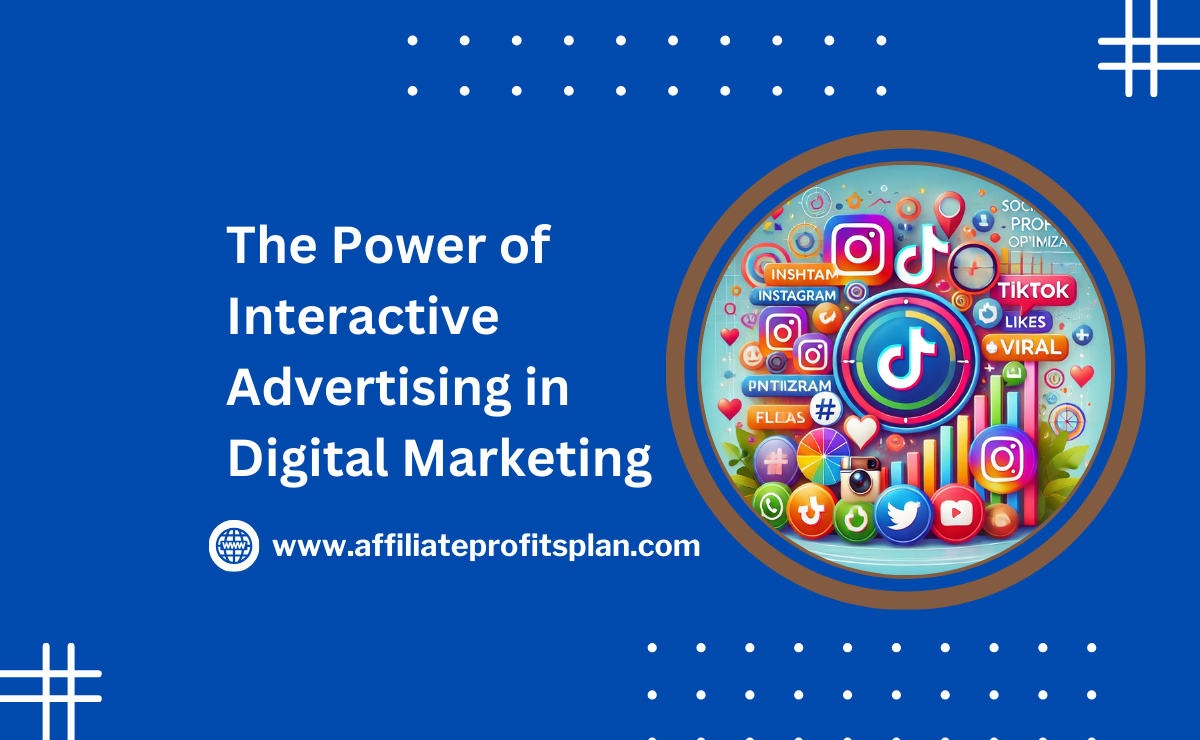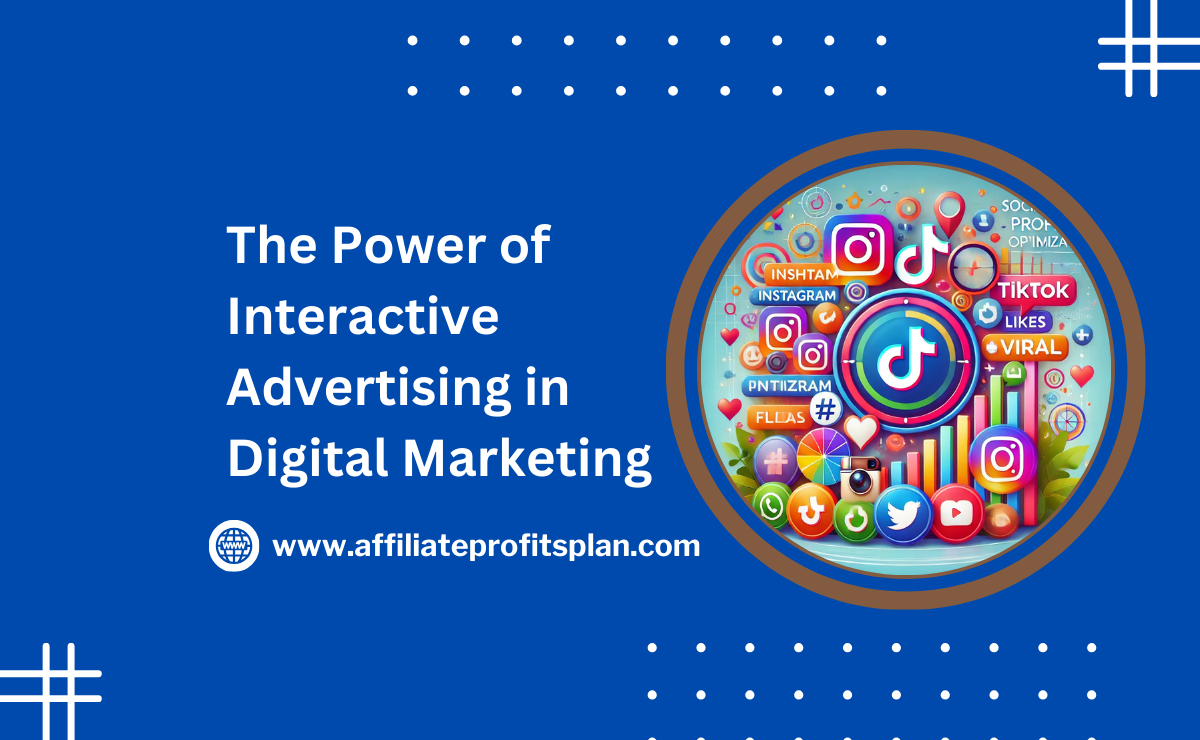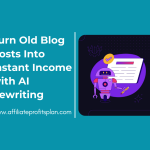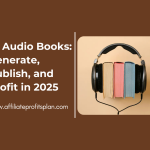Welcome to my article “The Power of Interactive Advertising in Digital Marketing” Gone are the days when advertising meant passively watching a commercial or scrolling past a banner ad without a second thought. In today’s fast-paced digital world, consumers don’t just want to see ads—they want to engage with them. Enter interactive advertising, the marketing game-changer that turns passive viewers into active participants. Whether it’s a fun quiz that reveals which Marvel superhero you are (because, let’s be honest, we all secretly want to be Iron Man) or an augmented reality (AR) ad that lets you try on sunglasses before buying, interactive ads create experiences, not just impressions.
But why is this such a big deal? Well, in a world where attention spans are shorter than a TikTok dance trend, engagement is everything. Interactive advertising doesn’t just grab eyeballs—it holds them, making users more likely to remember, respond, and even share the experience. Plus, it’s a win-win for brands and consumers alike: businesses get valuable data on customer preferences, and users get entertained instead of bombarded with yet another “BUY NOW” message. So, if your digital marketing strategy still relies on static ads alone, it might be time for a serious upgrade. Let’s dive into how interactive advertising is changing the game and how you can use it to supercharge your marketing efforts.
Access Our Proven Tested Formula for $50-$100 Daily Income – Watch This FREE Video >>

What is Interactive Advertising?
Imagine an ad that doesn’t just sit there like a digital billboard but actually talks to you, asks for your opinion, or even lets you play a quick game. That’s interactive advertising in a nutshell—it’s the cool, tech-savvy cousin of traditional ads, designed to engage users by requiring some form of participation. Instead of passively consuming content, audiences get involved, making the experience far more memorable (and way less skippable).
So, what does this look like in action? It can be as simple as a poll on Instagram Stories, where brands ask followers to vote on their favorite new product color, or as advanced as an AR-powered virtual try-on, allowing users to see how a new pair of sneakers looks on their feet before purchasing. Other popular forms include interactive videos, gamified ads, and shoppable posts that let customers add items to their cart straight from an ad.
The beauty of interactive advertising lies in its ability to capture attention, boost engagement, and collect valuable insights in ways that static ads simply can’t. Instead of being another banner lost in the digital void, these ads invite users to take action—whether that’s swiping, clicking, playing, or even creating something of their own. And let’s be honest, who doesn’t love an ad that feels more like entertainment than a sales pitch?
Benefits of Interactive Advertising in Digital Marketing
Interactive advertising isn’t just a shiny new toy in the digital marketing world—it’s a powerhouse strategy that delivers serious results. Unlike traditional ads that people scroll past faster than a Monday morning email, interactive ads demand attention, create memorable experiences, and (most importantly) drive conversions. Let’s break down why brands are jumping on this trend faster than you can skip a YouTube ad.
1. Skyrocketing Engagement Rates
People love to interact—whether it’s voting in a poll, spinning a prize wheel, or playing a quick branded game. Interactive ads tap into this instinct, making users far more likely to engage compared to static ads. A study by Econsultancy found that interactive content generates twice the engagement of passive content. More interaction means more brand awareness, and more brand awareness leads to… well, let’s just say your sales team will be very happy.
2. Improved Brand Recall
Ever clicked on an ad just because it was fun? That’s the magic of interactive advertising. When users actively participate in an ad, they remember it—because they’ve experienced it, not just seen it. A gamified ad or an immersive quiz sticks in people’s minds way longer than a generic banner ad screaming, “Buy now!”
3. Higher Conversion Rates
Engagement is great, but what about sales? Here’s the kicker—interactive ads drive more conversions. Whether it’s a “Swipe Up to Shop” feature on Instagram or an interactive product demo, these ads reduce friction in the buying process. According to HubSpot, interactive content converts 70% more often than static content. That’s the difference between someone considering your product and actually buying it.
4. Better Data Collection (Without Being Creepy)
Marketers love data almost as much as coffee, and interactive ads deliver it in real time. Unlike traditional ads that rely on passive tracking, interactive ads let users willingly share their preferences, interests, and behaviors. A personality quiz or an interactive survey can tell you exactly what your audience wants—without relying on those controversial third-party cookies.
5. Enhanced User Experience
Let’s be honest: nobody likes being advertised to. But when the ad itself is entertaining, useful, or rewarding, the experience changes. Interactive advertising turns marketing into a two-way conversation rather than a one-way sales pitch, making users more likely to view your brand in a positive light. Plus, when users feel in control, they’re more receptive to your message.
Final Thoughts
In a world where attention spans are shorter than a TikTok video, interactive advertising offers a way to cut through the noise, engage your audience, and drive real results. Whether you’re using AR filters, interactive infographics, or AI-powered chatbots, one thing is clear: the future of digital marketing isn’t just about telling your audience something—it’s about letting them be part of the experience.
Best Practices for Creating Interactive Ads
So, you’re ready to dive into the world of interactive advertising? Great choice! But before you start throwing quizzes, polls, and augmented reality filters at your audience, let’s talk strategy. Because while interactive ads can work like magic, poorly executed ones can feel as frustrating as a pop-up ad that won’t close. Here’s how to get it right.
1. Make It Easy and Intuitive
If users have to think too hard about how to interact with your ad, you’ve already lost them. Keep it simple. Whether it’s a swipe, tap, scroll, or click, make sure the action is obvious and requires minimal effort. A “drag and drop” feature? Cool. A 10-step form just to see a product recommendation? Not so much.
🔹 Pro Tip: Test your interactive ad on different devices—especially mobile. If it’s not mobile-friendly, you’re leaving money on the table.
2. Align with User Intent
Your interactive ad should feel like a natural part of the user’s journey, not a gimmicky distraction. Think about where your audience is and what they actually want at that moment.
✅ Examples that work:
- A makeup brand offering a virtual “Try It On” feature before checkout.
- A fitness app with a quiz that suggests personalized workout plans.
- A travel agency using an interactive map to help users pick their next vacation.
❌ Examples that don’t:
- A finance app making users play a game before seeing loan rates (seriously, who has time for that?).
- A B2B SaaS tool forcing users to complete a survey just to view pricing.
3. Keep It Visually Appealing (But Not Overwhelming)
Interactive doesn’t mean chaotic. Avoid cluttering your ad with too many animations, buttons, or overwhelming graphics. Stick to a clean design, bold calls-to-action (CTAs), and smooth transitions.
🔹 Pro Tip: Use color psychology—bright, inviting colors for fun and playful experiences, and sleek, modern tones for professional brands.
4. Offer Real Value or Incentives
People won’t interact with your ad just because it’s interactive. There has to be a clear benefit to them. What’s in it for them? A discount? A personalized recommendation? A chance to win something?
✅ Great examples of value-driven interactive ads:
- A fashion brand running a “Spin the Wheel” giveaway for discounts.
- A tech company offering a quiz that recommends the best laptop for the user’s needs.
- A coffee brand with a gamified loyalty program that rewards points for engagement.
If the interaction feels pointless, users will abandon it faster than an unskippable YouTube ad.
5. Optimize for Speed and Performance
Nothing kills engagement faster than a slow-loading ad. If your interactive content takes too long to load, people will bounce. Make sure your ad is optimized for:
✔ Fast load times (especially on mobile)
✔ Minimal lag in animations and interactions
✔ Smooth transitions between steps
🔹 Pro Tip: Use lightweight code, compress images, and test across multiple browsers before launching.
Access Our Proven Tested Formula for $50-$100 Daily Income – Watch This FREE Video >>
6. Use Clear Calls-to-Action (CTAs)
Interactive ads are fun, but they also need a purpose. What do you want users to do next? Whether it’s buy now, sign up, learn more, or share, your CTA should be crystal clear.
✅ Good CTA examples:
- “Tap to Try Now” (for AR filters or product demos)
- “Find Your Perfect Fit” (for quizzes)
- “Unlock Your Exclusive Offer” (for gamified promotions)
❌ Bad CTA examples:
- “Click Here” (Click where? Why?)
- “Submit” (Submit what?)
- “Continue” (To where? For what?)
7. Track, Test, and Improve
Your first interactive ad might not be a home run—and that’s okay. Track user behavior, analyze engagement rates, and tweak your approach. A/B testing different versions can help you optimize for better results.
🔹 Metrics to track:
- Engagement rate (How many users actually interact?)
- Completion rate (How many finish the experience?)
- Conversion rate (How many take the next step?)
Final Thoughts
Interactive advertising is the future, but only if done right. Focus on making it seamless, valuable, and engaging, and your audience will not only interact but also take action. Get it wrong, and, well… let’s just say people will treat your ad like a pre-roll ad they can’t skip.
So go ahead—create, test, and innovate. The digital world is watching, and they’re ready to click, swipe, and engage—if you give them a good reason to.
Real-World Examples of Successful Interactive Advertising Campaigns
Interactive advertising isn’t just a cool trend—it’s a game-changer that has already transformed the way brands engage with audiences. Some companies have absolutely nailed it, proving that when done right, interactive ads can captivate users, boost brand awareness, and even drive massive sales. Let’s break down some of the most impressive interactive ad campaigns that set the bar high.
1. Netflix’s “Black Mirror: Bandersnatch” – Choose-Your-Own-Adventure Brilliance
Netflix didn’t just promote a show; they turned the entire experience into an interactive ad. Black Mirror: Bandersnatch was a first-of-its-kind interactive film where viewers could make decisions for the main character, leading to different story outcomes.
🔥 Why It Worked:
✅ It wasn’t just an ad—it was an experience.
✅ People spent hours rewatching to explore different endings (more screen time = more engagement).
✅ The campaign generated buzz across social media, with users discussing their choices.
🔹 Takeaway: If your product can be interactive in itself (not just the ad), you’ll hook your audience in a way they actually enjoy.
2. Burger King’s “Burn That Ad” – Augmented Reality for the Win
In one of the boldest interactive ad campaigns ever, Burger King encouraged users to use their app to “burn” competitor ads in augmented reality (AR). When customers pointed their phone at a McDonald’s ad, it appeared to catch fire, revealing a free Whopper coupon.
🔥 Why It Worked:
✅ It turned a traditional ad into an engaging mobile experience.
✅ Customers downloaded the Burger King app just to participate, boosting app engagement.
✅ It created social media buzz, with people sharing their experiences online.
🔹 Takeaway: Use AR and gamification to make interacting with your brand fun—people love free stuff, especially when there’s a challenge involved.
3. IKEA’s Place App – Try Before You Buy (Without Leaving Home)
IKEA used augmented reality (AR) to let customers virtually place furniture in their homes using their smartphone camera. Instead of guessing if that massive bookshelf would fit in their tiny apartment, users could see it in real time before buying.
🔥 Why It Worked:
✅ It solved a real problem for customers—no more furniture-buying regrets.
✅ It increased customer confidence, leading to higher conversion rates.
✅ It positioned IKEA as a tech-forward, customer-friendly brand.
🔹 Takeaway: Interactive ads work best when they provide real value—help customers visualize, customize, or experience your product before they commit.
4. Spotify’s “Wrapped” – The Personalized Marketing Genius
Every December, Spotify Wrapped takes over social media. Users get a personalized breakdown of their top songs, artists, and listening habits over the past year—complete with shareable graphics. This isn’t just a marketing tool; it’s an interactive ad that people actually want to post about.
🔥 Why It Worked:
✅ It made users feel special by giving them personalized insights.
✅ The FOMO effect kicked in—people wanted to share their Wrapped results online.
✅ It became free advertising, with users doing the marketing work for Spotify.
🔹 Takeaway: Personalization is key—if you can make users feel like your ad is made just for them, they’ll engage with it and share it with others.
5. Coca-Cola’s “Share a Coke” – The Name That Sold Millions
Coca-Cola’s legendary interactive campaign swapped its iconic logo for people’s names on bottles. Suddenly, buying a Coke became personal—people searched for bottles with their names, bought them for friends, and even shared photos online.
🔥 Why It Worked:
✅ It made Coke feel personal—everyone wanted their name on a bottle.
✅ It encouraged social sharing—people posted photos of their personalized Cokes.
✅ It drove repeat purchases, as customers hunted for different names.
🔹 Takeaway: Let your audience see themselves in your product—customization and personalization make people feel connected to your brand.
Final Thoughts
The most successful interactive ad campaigns aren’t just about being flashy or fun—they engage users in meaningful ways. Whether it’s gamification, augmented reality, personalization, or social sharing, the best interactive ads create an experience so compelling that people want to participate.
So, as you craft your own interactive ad strategy, ask yourself:
- Does it entertain, inform, or solve a problem?
- Is it easy and intuitive to use?
- Does it encourage sharing and social buzz?
Get those elements right, and your brand might just create the next viral interactive campaign.
Conclusion: The Future is Interactive
Let’s face it—static ads just don’t cut it anymore. We live in a world where people expect to engage, participate, and even play with the content they consume. That’s why interactive advertising isn’t just a cool trend—it’s a game-changing strategy that’s here to stay.
Access Our Proven Tested Formula for $50-$100 Daily Income – Watch This FREE Video >>
From augmented reality experiences and gamified brand promotions to personalized ad campaigns, interactive advertising does what traditional ads can’t: it grabs attention, holds it, and turns passive consumers into active participants. And guess what? People actually enjoy it. Whether they’re “burning” competitor ads for free burgers, customizing a Coke bottle with their name, or making decisions in a Netflix film, they’re engaging with brands on their own terms—and that’s marketing gold.
For businesses, the takeaway is simple: If you want to stand out in the crowded digital space, it’s time to make your ads more than just “watchable.” Make them clickable, playable, and shareable. The brands that master interactive advertising will be the ones that dominate the digital marketing landscape—not just in 2025, but for years to come.
Thanks a lot for reading my article on “The Power of Interactive Advertising in Digital Marketing” till the end. Hope you’ve helped. See you with another article.










